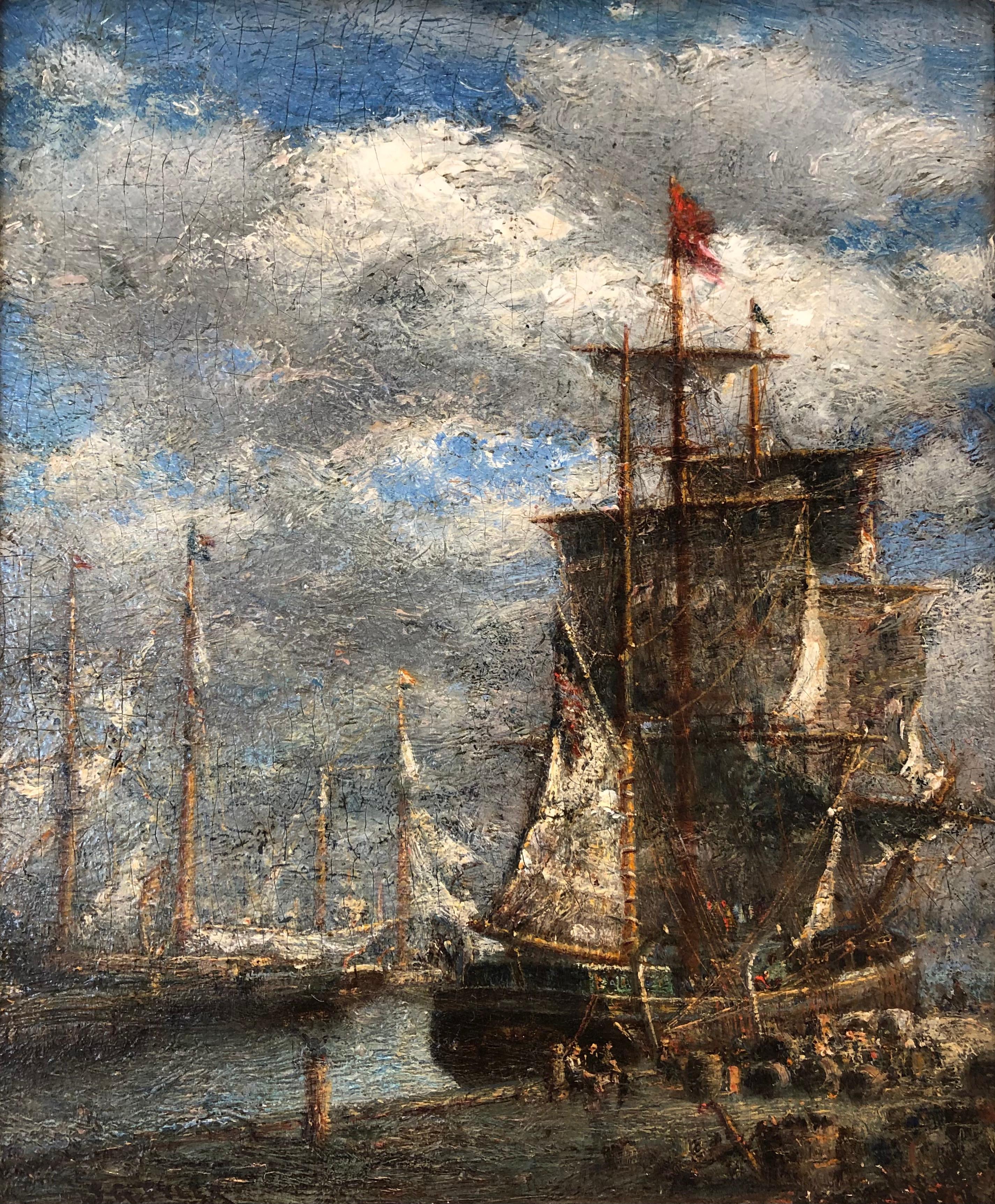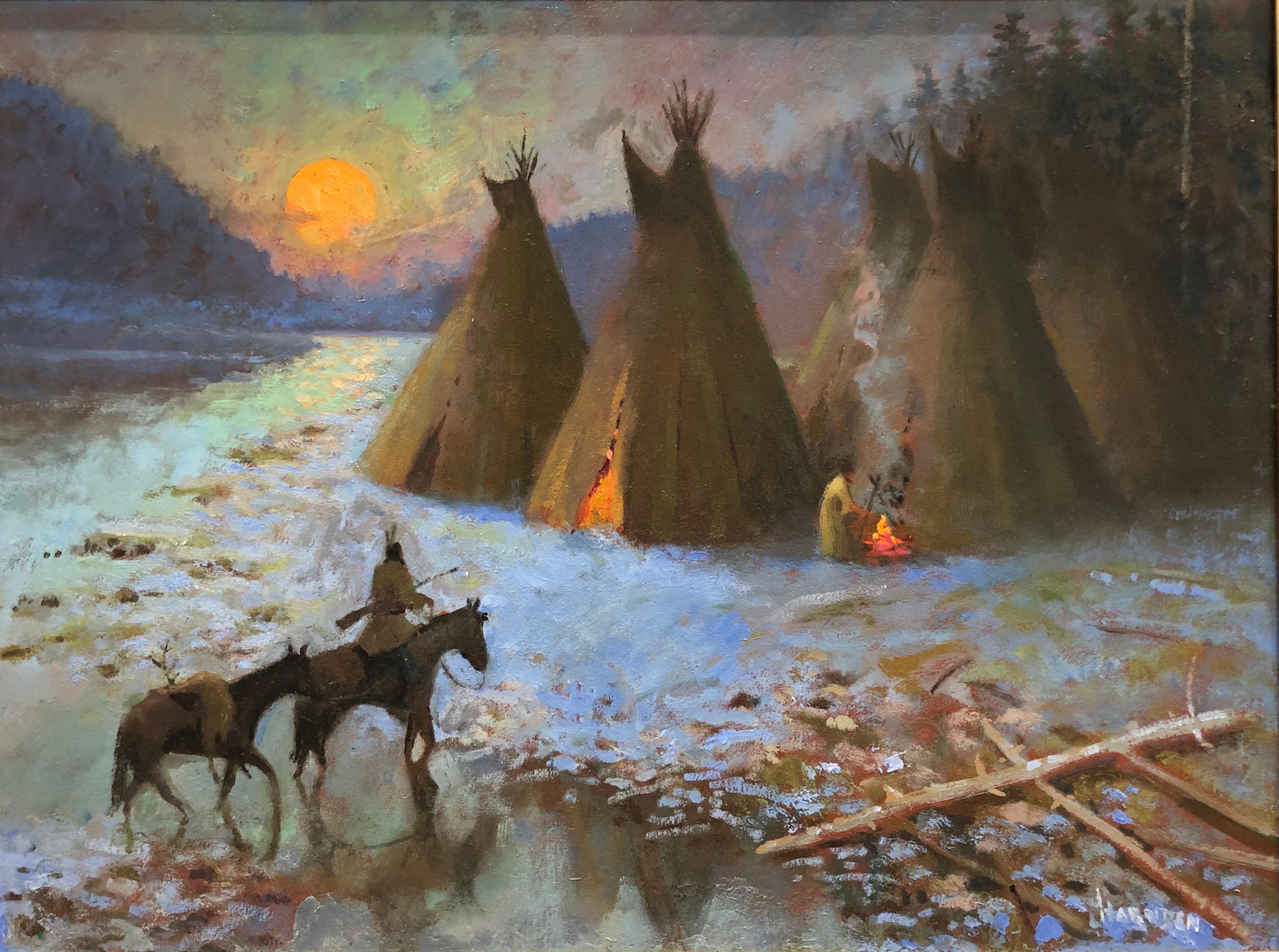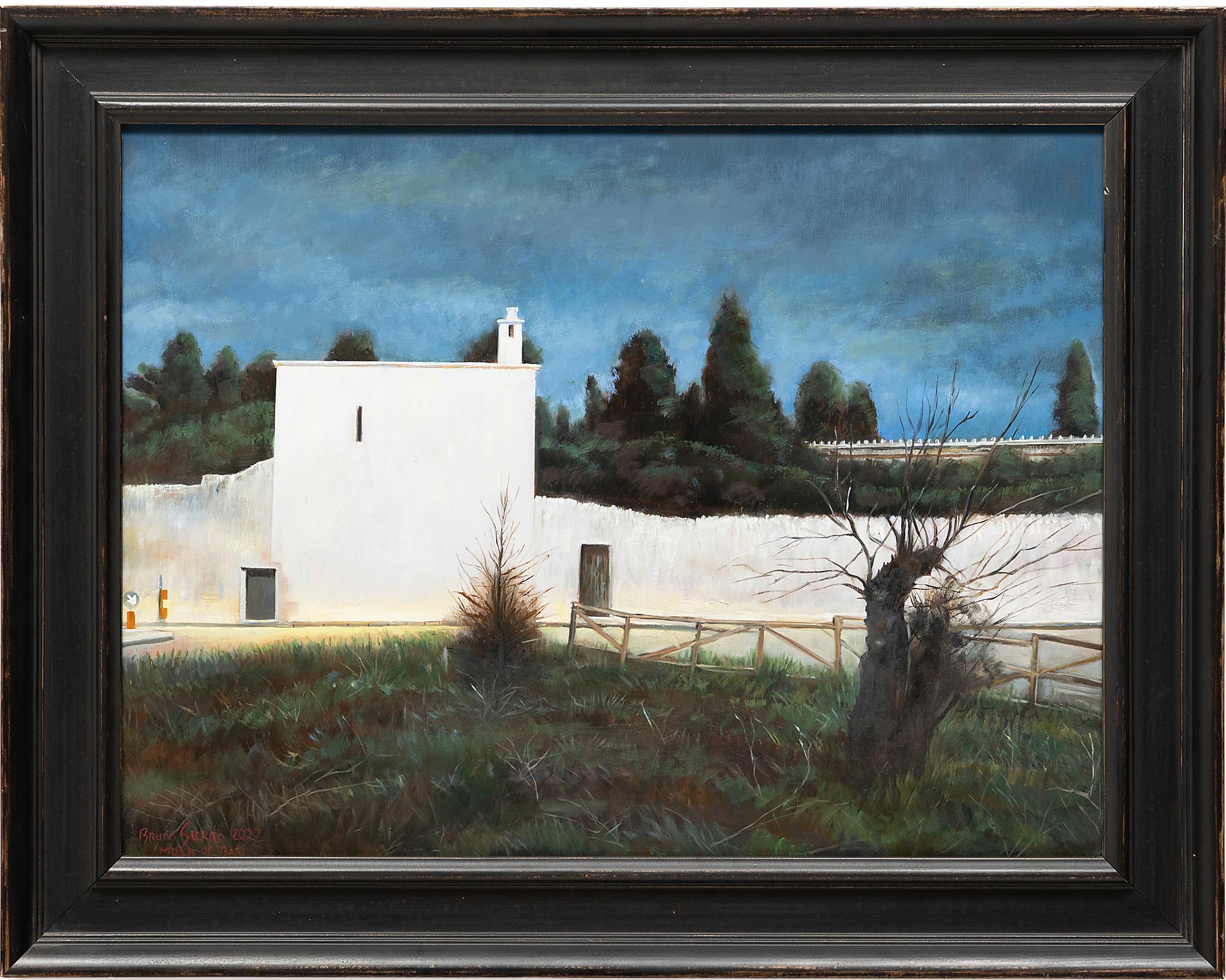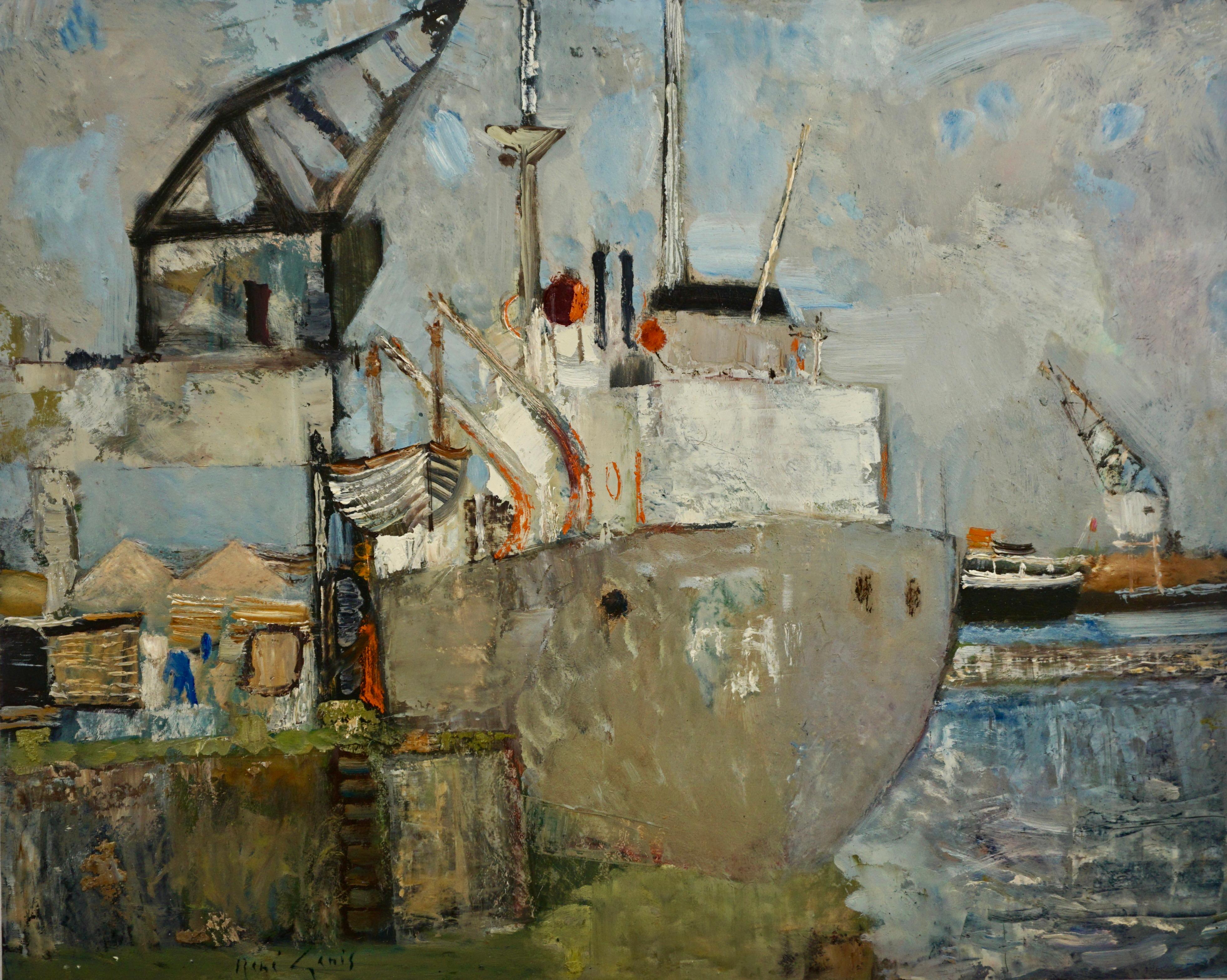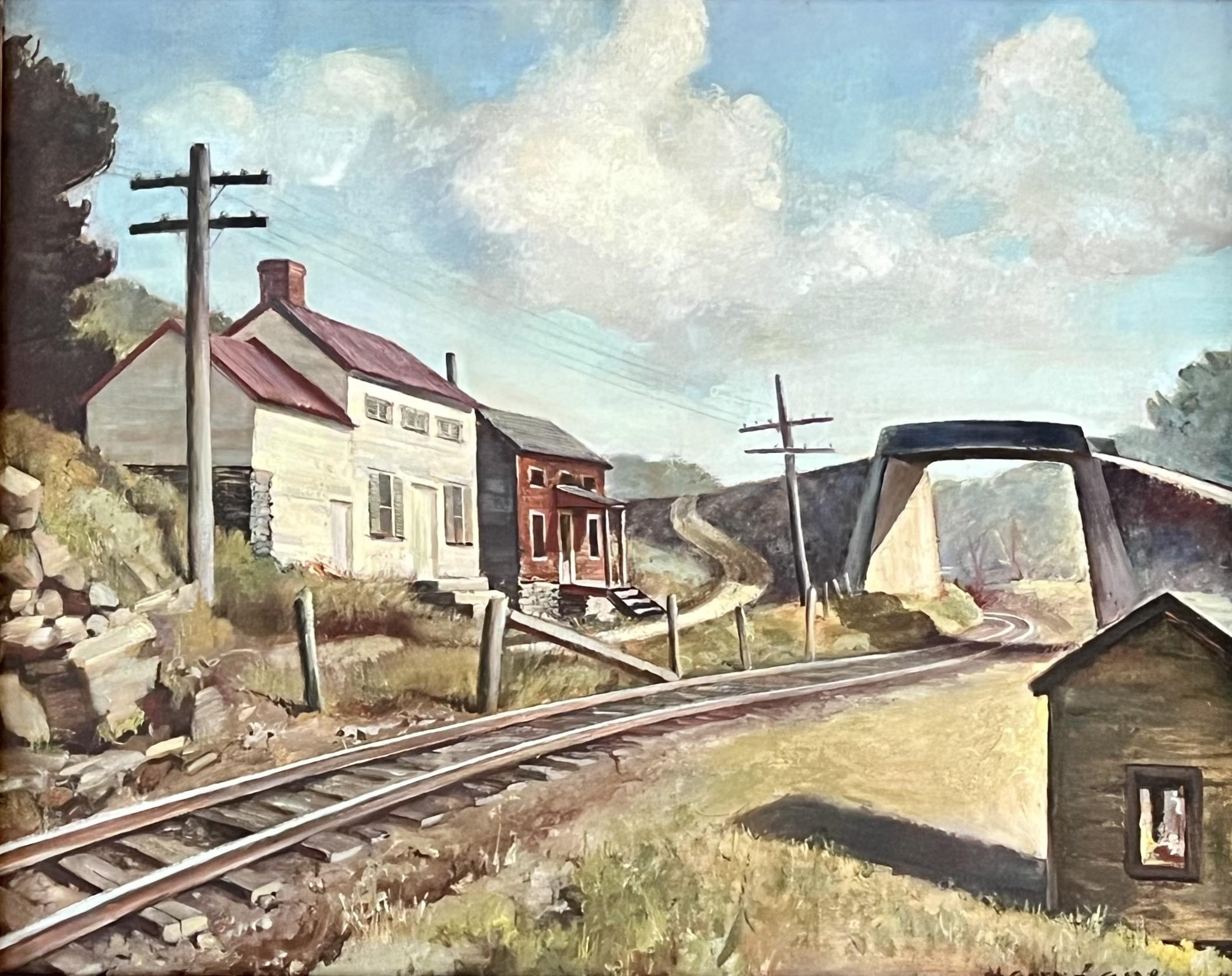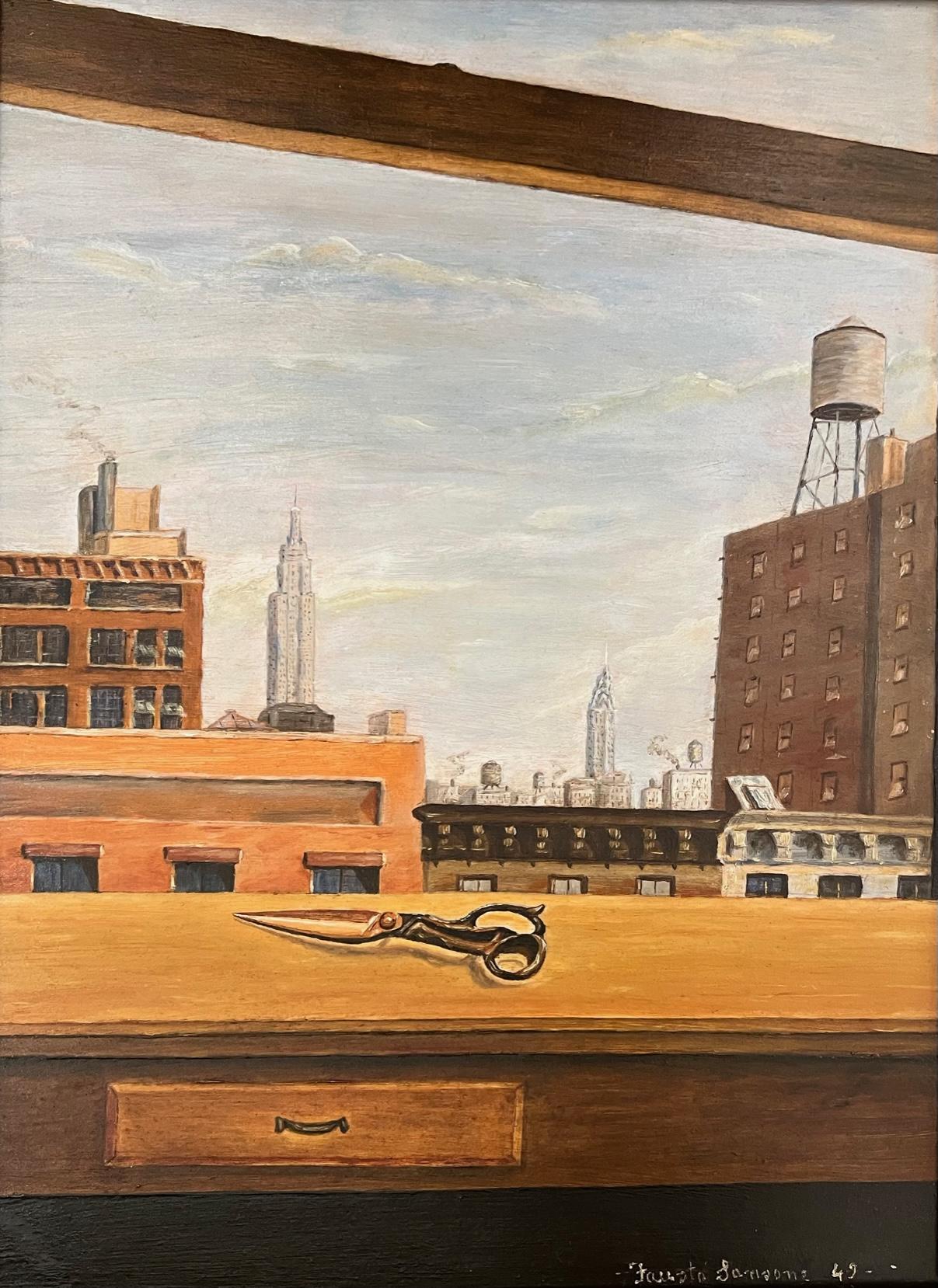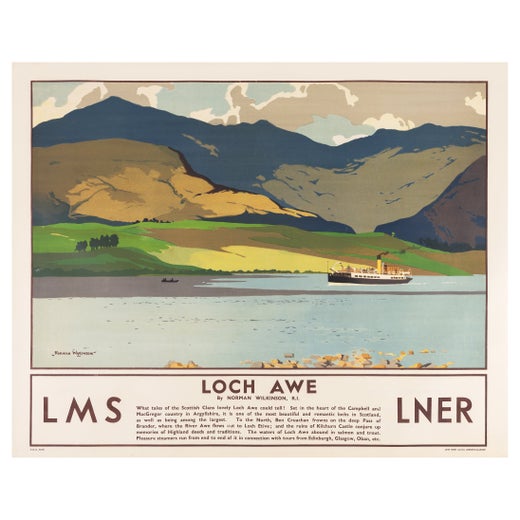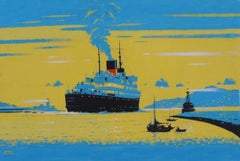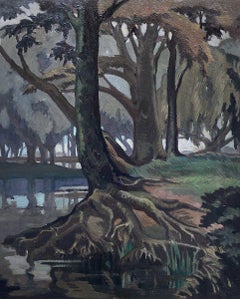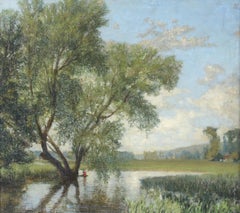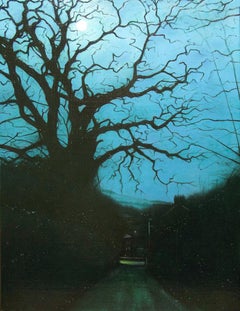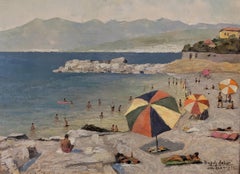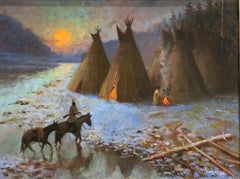
The Isle of Skye Ferry, 20th Century Travel Poster Original Oil
View Similar Items
Want more images or videos?
Request additional images or videos from the seller
1 of 6
Norman WilkinsonThe Isle of Skye Ferry, 20th Century Travel Poster Original Oil
$29,738.81List Price
About the Item
- Creator:Norman Wilkinson (1878 - 1971, British)
- Dimensions:Height: 22.05 in (56 cm)Width: 22.05 in (56 cm)
- More Editions & Sizes:1 of 1Price: $29,739
- Medium:
- Period:
- Condition:
- Gallery Location:London, GB
- Reference Number:1stDibs: LU5247338432
Norman Wilkinson
Born in Cambridge in 1898 and educated at Southsea School of Art, Norman Wilkinson is known for his graphic art, specifically his British Railway poster images, and also for something quite incredible; Wilkinson revolutionized the art of naval camouflage. Having been assigned to submarine patrols in Dardanelles, Gallipoli, and Gibraltar during WWI as a member of the Royal Navy Volunteer Reserve, Wilkinson was deeply troubled by the unprecedented success the German submarine fleet had torpedoing British ships. He hoped to find a solution to this gaping vulnerability, and in a lightning bolt moment, he had an epiphany that would change everything. Wilkinson says in his autobiography, A Brush With Life (Seeley, 1969), that he realized a ship could be painted to hide its shape against the sea and sky. In his own words, Wilkinson states that the hull of a ship could be camouflaged "not for low visibility, but in such a way as to break up her form and thus confuse a submarine officer as to the course on which she was heading." After some preliminary testing, the theory Wilkinson called "dazzle camouflage" was accepted by British Admiralty and Wilkinson was placed in charge of the naval camouflage unit. The unit, which was headquartered in the basement of the Royal Academy of Arts, consisted of Wilkinson and about two dozen "camoufleurs;" they were artists, students, model makers and consultants, including a zoologist. The dazzle schemes were tested on models and then distributed to artists who were stationed at the docks, where the ships would be painted. At the end of the war Wilkinson was formally declared the inventor of dazzle camouflage and awarded for his contribution. Wilkinson went on to enjoy a long and celebrated career as a painter of maritime scenes, naval vessels, and warships. He served as the president of the Royal Institute of Painter in Water Colours (RI) from 1936 until 1963 (elected member in 1906); he was elected Honourable Marine Painter to the Royal Yacht Squadron in 1919, and he was a member of the Royal Society of British Artists, the Royal Institute of Oil Painters, the Royal Society of Marine Artists, and the Royal Scottish Society of Painters in Watercolour. In 1918 he was appointed an Officer of the Order of the British Empire (OBE), and a Commander of the Order (CBE) in 1948. In January 1920 he was appointed knight (chevalier) of the Belgian Order of the Crown. Among many notable points of interest regarding Wilkinson's career is that his painting Plymouth Harbour, which was commissioned by Cunard White Star Lines for the first class smoking room of the RMS Titanic, was lost at sea when it perished with the ship. Wilkinson had also created a comparable painting entitled The Approach to the New World, for the Titanic's sister ship, the RMS Olympic. This work may be seen in the 1958 film A Night to Remember in scenes aboard the Titanic, where is served as the stand-in for Plymouth Harbor.
About the Seller
5.0
Vetted Professional Seller
Every seller passes strict standards for authenticity and reliability
Established in 2007
1stDibs seller since 2014
82 sales on 1stDibs
Typical response time: 6 hours
Authenticity Guarantee
In the unlikely event there’s an issue with an item’s authenticity, contact us within 1 year for a full refund. DetailsMoney-Back Guarantee
If your item is not as described, is damaged in transit, or does not arrive, contact us within 7 days for a full refund. Details24-Hour Cancellation
You have a 24-hour grace period in which to reconsider your purchase, with no questions asked.Vetted Professional Sellers
Our world-class sellers must adhere to strict standards for service and quality, maintaining the integrity of our listings.Price-Match Guarantee
If you find that a seller listed the same item for a lower price elsewhere, we’ll match it.Trusted Global Delivery
Our best-in-class carrier network provides specialized shipping options worldwide, including custom delivery.More From This Seller
View AllFishguard to Rosslare - 20th Century Oil
By John S. Smith
Located in London, GB
John S. Smith
1921 - 2010
Fishguard to Rosslare
Oil and gouache on board, signed lower left
Image size: 35 × 22 inches (89 × 56 cm)
Contemporary art deco style frame
This wonderfull...
Category
20th Century Landscape Paintings
Materials
Oil, Gouache, Board
The Forest Pool 20th Century Original Oil Painting
Located in London, GB
Ethelbert White
1891-1972
The Forest Pool
Oil on board
Image size: 14 x 11 1/4 inches (35.5 x 28.5 cm)
Original frame
Ethelbert White is probably best...
Category
20th Century Landscape Paintings
Materials
Oil, Board
A Willow Tree - British landscape, 20th Century, Oil
Located in London, GB
Leslie Ernest Parkinson
1903 - 2001
A Willow Tree
Oil on board, initialled and dated 1930 top left
Image size: 10 x 12 inches
Handmade frame
Parkinson was born in Islington in 19...
Category
1930s Landscape Paintings
Materials
Oil, Board
Lanidloes, Contemporary 21st Century Oil Landscape
By Jeremy Andrews
Located in London, GB
Jeremy Andrews
Born 1974
Llanidloes
Oil on board, signed verso
Image size: 9.75 x 7.5 inches
Jeremy Andrews works in oils and uses traditional techniques such as under painting and glazing. He works meticulously to recreate what he sees, observing the finest details and subtleties in light and form.
A renowned portraitist, Andrews also specialises in landscapes and animal paintings. He lived and worked on a farm for a number of years and gained inspiration from the flora and fauna that surrounded him. He views this as a natural progression, imbuing his landscapes with the same depth and emotion that are perceptible in his other works.
THIS WORK IS INCLUDED IN OUR 'MOONLIGHT IN PAINTINGS AND WATERCOLOURS' EXHIBITION, CURRENTLY AT DARNLEY FINE ART...
Category
21st Century and Contemporary Contemporary Landscape Paintings
Materials
Oil, Board
Walmer
By Keith Holmes
Located in London, GB
Keith Holmes
Contemporary
Walmer
Oil on board, signed
Image size: 15 ¼ x 9 ¾ inches
Framed
Born in Richmond, North Yorkshire, Keith studied fine art at West Surrey College of Art and Design before qualifying as a paper conservator at Camberwell School of Art and Crafts. In 1977 he was visiting professor on the conservation programme run by New York State University, where he taught conservation studies at postgraduate level.
He is a fellow of the International Institute of Conservation and Fellow of the Royal Society of Arts. He divides his time between work as a practising artist, a freelance conservator and the renovation of a disused chapel/boathouse where he lives with two Bengal cats...
Category
21st Century and Contemporary Contemporary Landscape Paintings
Materials
Oil, Board
$5,569
Salisbury Lanes, 20th Century English Landscape
By Eric Brown
Located in London, GB
ERIC BROWN
1894 - 1955
Salisbury Lanes
Oil on board, signed lower left
Image size: 7 x 10 inches
Contemporary frame
Eric Pitt Brown was born in 1894 in Sal...
Category
20th Century Landscape Paintings
Materials
Oil, Board
You May Also Like
Home Safe
By James Gale Tyler
Located in Greenville, DE
Very well executed seascape. Alternate title "In Point" inscribed on the rear. 17 x 15in in frame, including linen liner. ...
Category
Late 19th Century Impressionist Landscape Paintings
Materials
Oil, Board
The Beach at Norderney
Located in Greenville, DE
Andor Basch (1885-1944)
Signed lower right, dated 1922 and inscribed "Norderney"
16 1/2" x 19 1/2" in 23kt gold leaf frame
Possibly one of the first appearances of the 2-piece bathin...
Category
20th Century Impressionist Landscape Paintings
Materials
Oil, Board
Coming Home at Sunset
By William Harnden
Located in Greenville, DE
Very well executed work by American artist William Harnden who specialized in Native American subjects. 23 3/4 x 29 1/2 in excellent condition frame.
Category
Mid-20th Century Realist Landscape Paintings
Materials
Oil, Board
Native American Encampment
By William Harnden
Located in Greenville, DE
Very well executed work by American artist William Harnden who specialized in Native American subjects. 23 3/4 x 29 1/2 in excellent condition frame.
Category
Mid-20th Century Realist Landscape Paintings
Materials
Oil, Board
"Passage to Town, " Oil on Board
By Bruno Surdo
Located in Chicago, IL
Chicago-based fine art painter Bruno A. Surdo is classically trained in drawing and oil painting in the tradition of Renaissance masters. With strong command of the human form, Surdo...
Category
21st Century and Contemporary Old Masters Landscape Paintings
Materials
Oil, Board
Port Brenton
By Gabriel Deschamps
Located in Berlin, MD
Gabriel Deschamps (1919 - , France) "Port Brenton". Oil on board, framed. The frame is 21” x 24," the board is 15" high by 18" wide. This is a beautiful port scene with blues, gre...
Category
Late 20th Century French School Landscape Paintings
Materials
Oil, Board
$2,800 Sale Price
20% Off
Recently Viewed
View AllMore Ways To Browse
Cecilia Beaux
Everglades Painting
Lil Painting Landscape
Moran Thomas
Robert Winslow
Sally Scales
Texas Longhorn Paintings
Antique Murphy
Antique Victorian Bustle
Burnett Oil Painting
Coronado Paintings
Craig Green
Dentist Sign
Fjord Oil Painting
Henry Watson
Marilyn Monroe Chanel
Paintings Of Lake Como
Peter Tovpev
